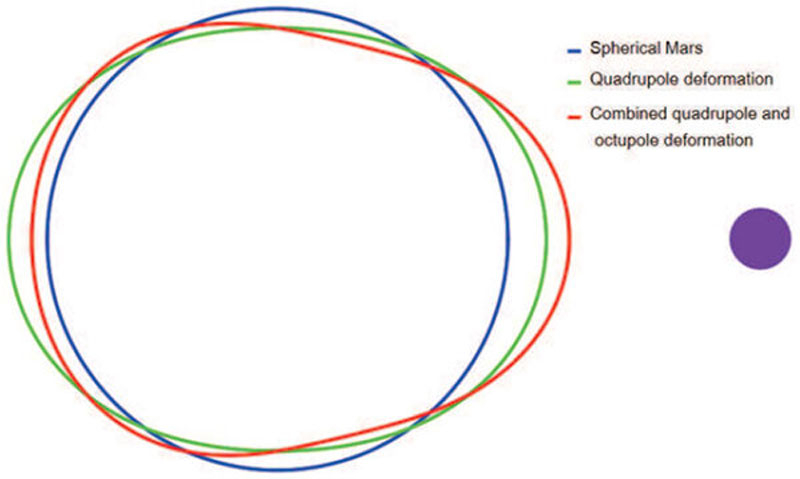Modern Mars is far from the spherical and even uniformly flattened shape of an ellipsoid. The planet is asymmetrical, which raises questions about the evolution of Mars. American scientist Michael Efroimsky presented on the website arXiv.org a copy of an article sent to the Journal of Geophysical Research: Planets, in which he explains the clearly distorted shape of Mars. The reason for this is that the third moon of Mars is missing today, the scientist believes.

How Nerio could influence the shape of Mars. Image source: Mikhail Efroimsky
As is known, tidal gravitational influence is felt by both bodies: large (the planet) and small (its satellite). While the planet is an ocean of hot magma, its moon causes ebbs and flows on it, similar to the behavior of oceans of water on Earth. As the magma cools, the planet will retain its odd shape if the satellite’s gravity is strong enough to distort it. According to the scientist, the hypothetical third moon of Mars, which he named Nerio after the wife of the god of war Mars from Roman mythology, could have a mass of a third of our Moon, turning Mars into a triaxial ellipsoid.
By the presence of a third moon near Mars in a synchronous orbit, the scientist also explained some topological (geological) anomalies in the relief of the Red Planet. For example, the presence of the largest mountain in the solar system (Olympus) or a giant canyon system – Valles Marineris.
«After the moon created the initial triaxiality and asymmetry of Mars, tidal regions became more susceptible to uplift caused by convection, as well as tectonic and volcanic activity,” writes Efroimsky.
The scientist does not reveal all the celestial mechanics that could arise with the appearance of a third moon on Mars, in addition to the current Phobos and Deimos (which may also be its remains). It is also unclear where the third satellite went, since there are no clear signs of the fall of a celestial body of this size on Mars. Questions remain for research, but such a hypothesis has a right to exist and can explain the geological evolution of Mars.